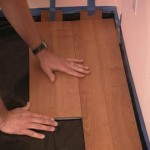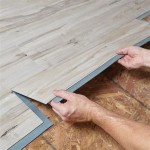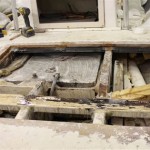Storing Leftover Hardwood Flooring: A Practical Guide
After completing a hardwood flooring project, it’s common to have leftover planks. While it might seem like a small detail, properly storing these remnants can make a significant difference in their longevity and future usability. This guide provides practical advice on how to store leftover hardwood flooring, ensuring it remains in optimal condition for potential future projects or repairs.
1. Understand the Importance of Proper Storage
Hardwood flooring is an investment, and preserving its quality is crucial. Improper storage can lead to damage, warping, and discoloration, rendering the wood unusable. Factors like humidity, temperature fluctuations, and exposure to sunlight can negatively impact the planks’ structural integrity and aesthetic appeal. Therefore, storing leftover hardwood flooring correctly is essential to retain its value and ensure it’s ready for future use.
2. Storage Options for Leftover Hardwood Flooring
There are several suitable storage options for leftover hardwood flooring, each with its own advantages and considerations:
2.1. Original Packaging
If possible, the best way to store leftover hardwood flooring is in its original packaging. The manufacturer’s packaging is designed to protect the planks from external elements. It typically includes moisture barriers and adequate support to prevent warping or damage.
2.2. Stacking with Supports
If the original packaging is not available, stacking the planks is an efficient storage method. However, proper support is crucial to prevent warping. Place the planks on a flat, dry surface, ensuring they are stacked evenly and supported from underneath. Use plywood sheets or wooden slats as support, spaced apart to allow airflow and minimize moisture buildup.
2.3. Storage Boxes or Bins
Storage boxes or bins offer a convenient and organized solution for storing leftover hardwood flooring. Choose boxes or bins made of breathable materials like plastic or wood to allow adequate ventilation. Ideally, these containers should be sealed to protect the planks from dust, dirt, and moisture.
3. Storage Environment Considerations
Regardless of the storage method chosen, the environment itself plays a significant role in preserving the quality of the leftover hardwood flooring:
3.1. Temperature and Humidity Control
Hardwood flooring is sensitive to temperature and humidity fluctuations. Ideal storage conditions involve maintaining a stable temperature between 60°F and 80°F and a humidity level between 30% and 50%. Avoiding extreme temperatures and humidity levels is crucial to prevent warping, cracking, or cupping in the planks.
3.2. Protection from Sunlight
Direct sunlight can fade the color of hardwood flooring over time. Store the planks in a dark, shaded area to prevent discoloration. Using a tarp or blackout sheets over the storage area can provide additional protection from sunlight and moisture.
3.3. Ventilation
Good ventilation is essential for preventing moisture buildup and maintaining a dry storage environment. Ensure the storage area is well-ventilated, allowing air to circulate freely around the planks. Avoid storing hardwood flooring in areas with high moisture levels, such as damp basements or attics.
By following these practical storage tips, you can effectively preserve the quality of leftover hardwood flooring, ensuring it remains in optimal condition for future use.

7 Leftover Hardwood Flooring Projects For Beginners Sawdust Sisters

How To Spare Engineered Hardwood Flooring From The Forest Llc

7 Leftover Hardwood Flooring Projects For Beginners Sawdust Sisters

What To Do With Your Left Over Wooden Flooring Discount Depot Blog

7 Leftover Hardwood Flooring Projects For Beginners Sawdust Sisters

10 Ways To Use Up Leftover Flooring Inc

10 Ideas For Leftover Flooring Warehouse Carpets

Storage Bench 18 Steps With S Instructables

Is It Worth Reclaiming Old Hardwood Floors To Make Stuff Finewoodworking
Ideas For Leftover Wood Flooring Woodworking Talk
Related Posts








